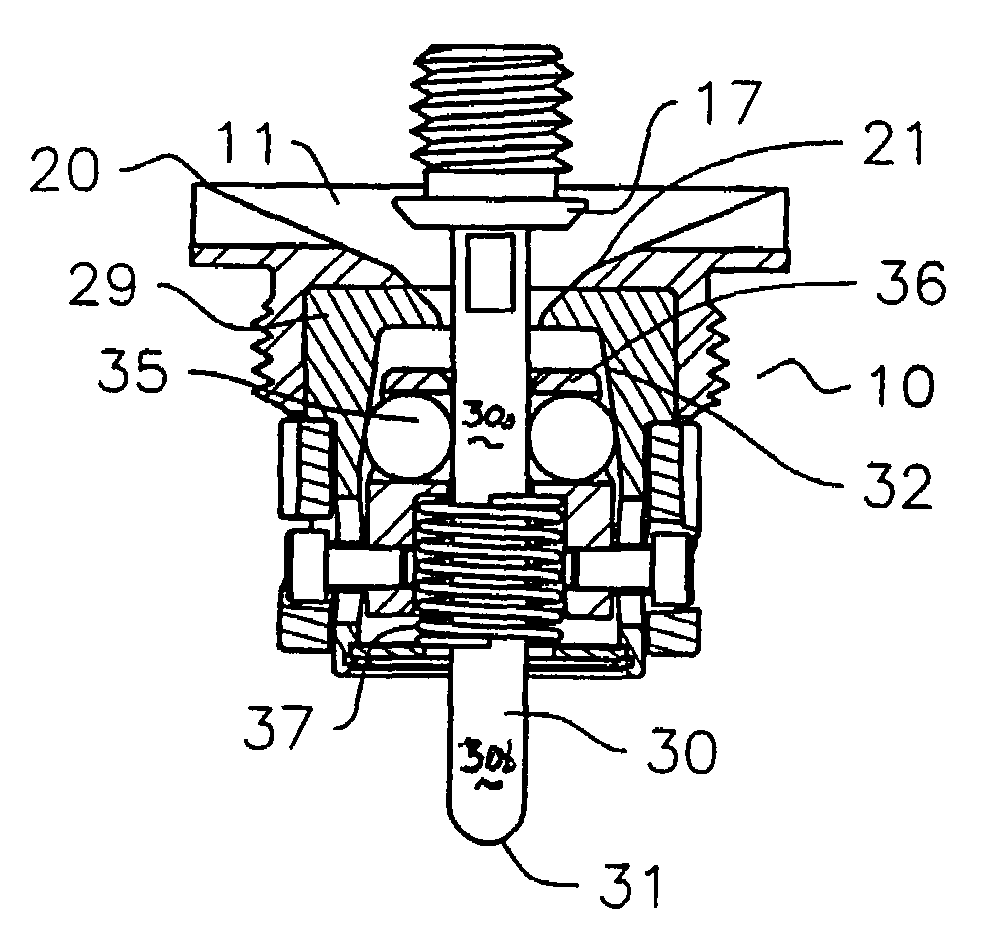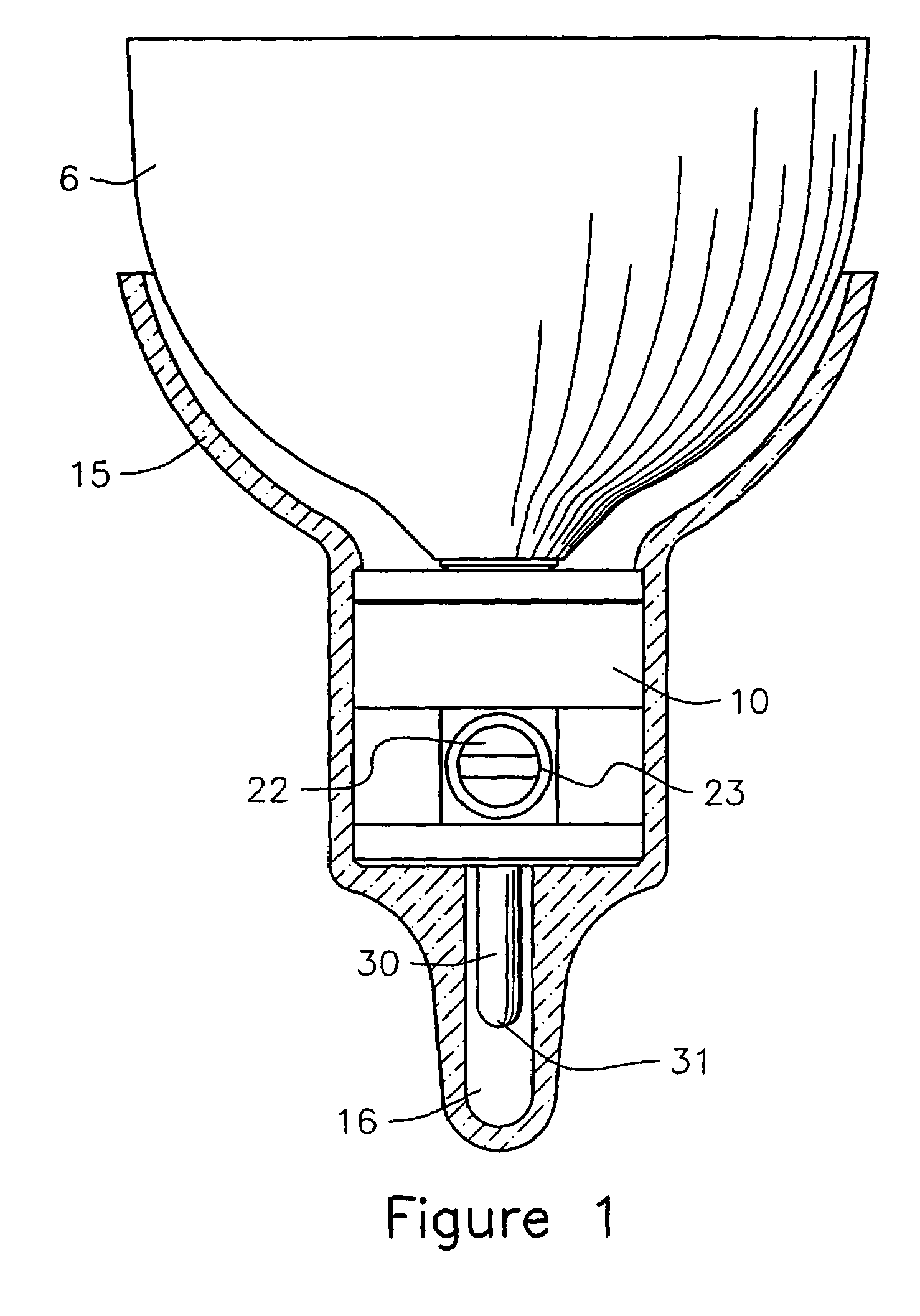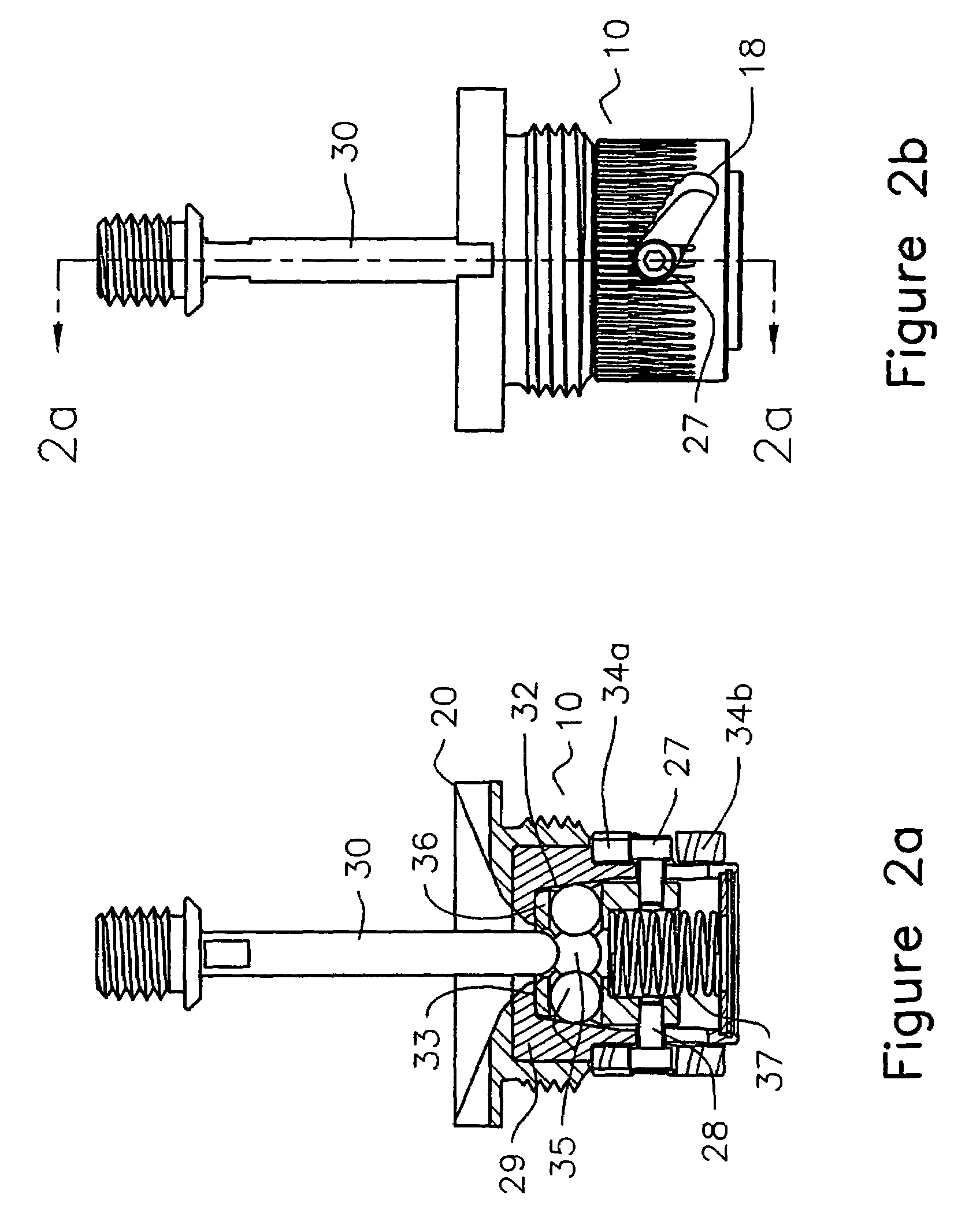Prosthetic locking device
a technology of locking device and prosthesis, which is applied in the field of prosthetic locking device, can solve the problems of not being able to adjust the volume of the residual limb without manual adjustment, the design is fraught with practical difficulties, and cannot be fully solved, so as to reduce the concern of rusting or corroding of the lock, and the effect of oxidation resistan
- Summary
- Abstract
- Description
- Claims
- Application Information
AI Technical Summary
Benefits of technology
Problems solved by technology
Method used
Image
Examples
Embodiment Construction
[0025]Referring now to the drawings and in particular to FIG. 1, a cross-sectional view of a prosthetic socket 15 with a smooth plunger 30 engaged in a locking device 10 is shown. The plunger 30 is attached to the distal end of a sleeve 6 adapted to fit over the residual limb of an amputee. Typical sleeve materials are urethanes, thermoplastic elastomers, or silicone based polymers. The socket 15 and locking device 10 are secured to the proximal end of a prosthesis, typically a prosthetic limb. The plunger 30 is shown fully engaged within the locking device 10. The distal end 31 of the plunger has passed through the locking device 10 and occupies the prosthetic socket plunger cavity 16. The plunger 30 may be tubular or rigid as depicted in FIG. 2a, or flexible such as the braided or twisted cable depicted in FIG. 6.
[0026]In a preferred embodiment the plunger 30 should be substantially smooth along its length, however, as in the case of braided cable, ridges in and around the circumf...
PUM
 Login to View More
Login to View More Abstract
Description
Claims
Application Information
 Login to View More
Login to View More - R&D
- Intellectual Property
- Life Sciences
- Materials
- Tech Scout
- Unparalleled Data Quality
- Higher Quality Content
- 60% Fewer Hallucinations
Browse by: Latest US Patents, China's latest patents, Technical Efficacy Thesaurus, Application Domain, Technology Topic, Popular Technical Reports.
© 2025 PatSnap. All rights reserved.Legal|Privacy policy|Modern Slavery Act Transparency Statement|Sitemap|About US| Contact US: help@patsnap.com



